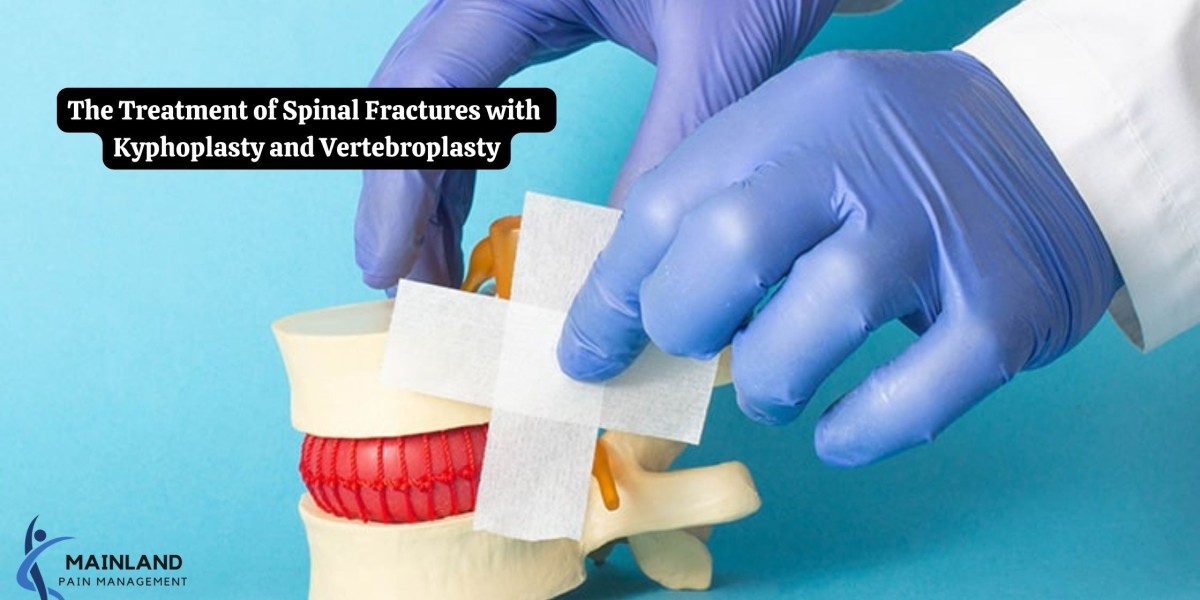These procedures, often considered for individuals diagnosed with osteoporosis or certain medical conditions, offer hope for alleviating pain and preventing further complications.
This blog delves into the details of these interventions, shedding light on who can benefit and what to expect during and after the procedures. The insights have been taken from Dr. Dipty Mangla, renowned for the best kyphoplasty in New Jersey. Continue reading for expert details.
Understanding Kyphoplasty and Vertebroplasty
Kyphoplasty and Vertebroplasty are minimally invasive procedures designed to address fractures in the thoracic and lumbar spines. These fractures can be particularly debilitating, often arising due to conditions like osteoporosis, cancer-related fractures, or vertebral hemangiomas. The hallmark of these procedures is the injection of medical-grade cement into the fractured vertebrae, which not only helps stabilize the bone but also provides relief from the intense pain caused by the compression.
Kyphoplasty vs. Vertebroplasty
One crucial distinction between these procedures lies in the use of a balloon. In Kyphoplasty, a balloon is inserted into the fractured vertebra and gently inflated to create a cavity within the bone. This space is then filled with cement, helping restore the vertebral body's height. On the other hand, Vertebroplasty involves the direct injection of glue into the fractured bone without the use of a balloon.
Identifying the Right Candidates
The decision to undergo kyphoplasty or vertebroplasty hinges on a variety of factors that a healthcare provider will consider. Candidates typically include individuals who:
Have been diagnosed with compression fractures in the thoracic or lumbar spine, mainly if linked to osteoporosis, cancer, or vertebral hemangiomas.
Have exhausted conservative treatments such as bed rest, bracing, or pain medications without satisfactory results.
Experience pain severe enough to require hospitalization or prolonged bed rest.
Have difficulty moving due to the pain associated with vertebral fractures.
The Procedure: Before, During, and After
Before the procedure, patients are usually advised not to eat for eight hours. Medications can generally be taken with a sip of water, but blood thinners need to be held as instructed by the provider. Patients must arrange for transportation, as driving is not recommended for 24 hours post-procedure.
The actual procedure is performed under deep sedation or general anesthesia. The medical team includes an anesthesiologist or sedation specialist who will discuss the process with the patient.
After the procedure, patients can expect immediate pain relief, although some may experience soreness. Patients are advised to avoid immersing themselves in bathtubs or swimming pools for five days and can typically resume physical therapy two days after the procedure.
Conclusion
Kyphoplasty and Vertebroplasty are innovative procedures that offer hope and relief to individuals burdened by painful spinal fractures. With the power to restore vertebral height, stabilize bones, and alleviate pain, these interventions have become beacons of light for those who have exhausted traditional treatments. Seeking a pain management physician in New Jersey? Consult with Dr. Dipty Mangla at Mainland Pain Management. She ensures a comprehensive diagnosis, personalized treatment plans, and effective relief. Book an appointment with her today and learn about the treatment in detail.








